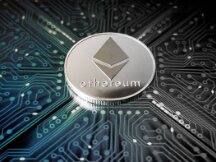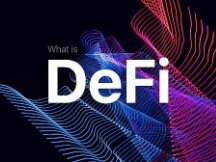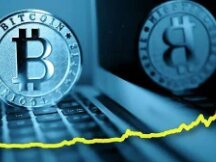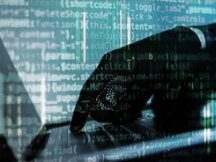GameFi: DeFi on the Metaverse
Since Facebook changed its name to "Meta", many marketers have fallen into the Metaverse trap. However, not only Meta, but also Microsoft and Nvidia have contributed to Metaverse like Disney.
Gemini has invested $ 400 million to compete with Zuckerberg's Meta, while other players like Epic Games have spent a total of over $ 4 billion on homes outside of Meta Gardens. Gemini has invested in several developers, including Althea, Somnium Space, Recur and Sandbox (SAND).
There is money to be made in the virtual world, and investors are recognizing the weight of the metaverse phenomenon following the global changes it has brought about over the past two years.
Likewise, the company recently bought virtual land from Decentraland for $ 2.5 million, the largest of the data (discussed later). As the demand for digital fashion and luxury increases, the metaverse will expand its digital products.
I'm not exaggerating that someone recently sold a Gucci bag on the Roblox online gaming platform Roblox for more than a real bag. Morgan Stanley estimates that the Metaverse luxury market will reach $ 50 billion by 2030 (10% of the luxury market).
Virtual land sales and high-end NFTs are just part of a larger increase that includes Play-to-Earn (P2E) and Sophisticated Decentralized Financing (DeFi). ), all of these strategies are called "gamepies".
Before we jump into GameFi, let's define "Metaverse".
What is the metaverse?
The metaverse means too much to people. A virtual world where you can communicate with your friends, family and colleagues, it is a place where you can feel the understanding that you cannot meet in the world responding to the body. While there are many people involved with VRChat and Second Life in the world of virtual reality (VR), others argue that cryptocurrencies, DeFi, NFT, and Web2 are all metaverse. . In addition to augmented reality and the Internet of Things, we can say that all the metaverse is.
The following definition from @pierskicks poetically covers all the bases.
"The Metaverse: A global, dynamic digital world that enables people to become more self-aware, social, space-aware, and able to participate in virtual reality. Broad with a sense of relationship."
If this translation is too precise, @MarioNawfal provides a more general description.

Anyone who's played Runescape, Sims Online, or Minecraft long enough to feel like a second life can think of a concept of the world you see in tweets.
In Anthony Bardaro's article on Disney's Ultimate Game in Designing Metaverse, he mentions the principle of metaverse Matt Ball.
Matt thinks the transition is a "full-fledged business venture" that won't change. "The invisible interaction of information, digital objects/assets and content" expands the physical world and many digital worlds. Metaverse marketing will be developed and managed by a wide range of partners, from independent developers to DAOs for commercial markets.
Badaro noted the true scale of the Metaverse as follows:
"To call it pure video games, virtual reality (VR) or augmented reality (AR) underestimates the greatness of the concepts of the metaverse: entertainment, racing, education, information and streaming discussion."
Perhaps we are still years away from the fictional world as portrayed in movies like Player One or books like Snow Crash (without touching the Matrix Rabbit). However, advancements in virtual reality, high-speed internet, surreal game engines, and blockchain technology have reached levels that will surprise us.
I mean, what is this video? 👇

Who makes the metaverse?
In addition to tech big data, many companies and groups have created various movements out of the metaverse.


As tech companies develop devices that allow them to interact and trade in the virtual world (and explore the best way to generate value for data and bags), companies like Decentraland ($ MANA) develop a metaverse of priority intention. improving the community.
"Decentraland is a virtual blockchain world where users can create their own devices, games, content, activities, etc. The Decentraland region is owned by the community, so you have control over your creations." - Decentralization White Paper
To say again Metaverse Network Bellweather @pierskicks. "Cryptocurrency lays the groundwork for financial regulatory oversight through NFTs, open markets, and global digital representation and membership hierarchy."
Let me explain why this is important.
Games like World of Warcraft and Runescape have a good market share, but these are limited by special games and strictly controlled by the central government.
For example, when he breaks the rules of the game to get capital from Runescape in exchange for your neighbor's fiat currency, it is very easy to run bots to play the language of the puzzle because there is no 'identification and equivalence that blockchain and NFTs provide. It is also easy to trick other players into buying a hardened account on the black market.
To prevent bad behavior, the company behind Runescape (The Carlyle Group) can switch to good games and activities overnight without users entering. Every time you invest in a game, it's a sad little price that's not fair to brag about because you don't have anything in this world.
You broke our service and you lost everything!
Despite the great fuss to stay in our line and play the payoff, many poor economies in countries like Venezuela rely on Runescape's black gold market to keep them out of the poor.
Show GameFi, one of the happiest examples of how blockchain technology and NFTs have revolutionized the gaming industry while at the same time connecting to the global marketplace.
What is Game Pie?
GameFi is an intersection of DeFi and P2E blockchain games on the Metaverse.
It is an ecosystem that includes possible commercialization by transferring ownership of equipment to players and fostering greater equity, participation and governance of sports energy communities.
In order to understand how GameFi can improve support for collaboration, it is necessary to understand the role of NFTs, P2E, gaming guilds, and some key players in commerce.

Source : https://messari.io/article/explain-it-like-i-m-5-gamefi
The role of NFTs in GameFi
One of the main features of P2E and the metaverse is the use of NFT everywhere.
According to a World Economic Forum article, “NFTs can do a lot of things in the virtual world, including logos, objects, landscapes, and personalized items such as digital clothing. "
In P2E, players can earn the best NFT for in-game achievements and then sell them for real money. This new construction destroys the special surveillance of the equipment while maintaining security and proof of ownership.
It also draws conclusions. DeFi has been accomplished with Metaverse.
The WEF added: "The greatest potential for sports to be acquired lies in their ability to influence digital wealth creation, marketing buy-in and change, and the capability these companies create when money is connected. It turns revenue into real revenue.”
Naturally, P2E will still rely on some form of ultimate control to restrict dissemination to NFTs, but there will be a community environment that will allow everything.
Someday we'll reach a place where the technology is radically decentralized and the metaverse so vast that it's nearly impossible to monitor how players express themselves or what they trade there. But today we are still far from the truth.
The development of NFTs has also quickly become a commodity, a community around some of the most profitable industries that can survive the bear market.
The beautiful works of art and the collection have always been like a non-profit store in times of financial crisis. Metaverse campaigns can benefit from developing valuable assets and experience to compete or collaborate with high-end community communities in the NFT industry such as BAYC, and developers and collectors who create people based on industries such as Art Blocks.
NFT-based blockchain game simulation
NFT-based apps like Loot and Rarity have transformed game enhancements by putting the entire project in the hands of the user. These "games" quickly gained credibility and game improvements took place in the gaming industry.
A loot-like community thrives on a highly integrated blockchain world, allowing owners to use it across multiple virtual worlds.
This means that sword burns in one world may be wet noodles in another, but its true value compounds the problems of the world and the tie industry.
Games designed to engage with Loot can attract investment and guild scholarships (guilds are at the heart of GameFi, which we'll talk about later).
Communities with few restrictions on NFT development can benefit from NFT aggregators like Genie. This allows extensive registration of different business entities and supports the entire process.
A Brief History of GameFi
GameFi is all about changing the power of game studios for gamers over the years. From Pay-for-Play (P2P), users pay for games developed by game studios.
Then free to play (F2P) appeared, where users could start playing for free and then decide which game they preferred to pay for the best experience. The main sources of income for F2P are advertising and extras (such as players and "skin" products). F2P games have easier access and help game studios communicate with the right players.
Then there's Play-to-Earn (P2E), which uses blockchain and NFT to gain user-independent ownership of assets. P2E was the pioneer of today's famous brands such as Axie Infinity and Gods Unchained.
The first P2E games were born from the commercialization of F2P games like Runescape and World of Warcraft (WoW). However, the most accomplished P2E game today is more of a variation of a game like Solitaire or Farm Town rather than a WoW-style MMORPG (many online players are role-playing).
The future of P2E is interactive in GameFi, attracting market players through the site and rewarding players and developers by creating and rewarding the game tool maker.
However, not all parts of the Metaverse can form bridges. Meta will not provide the level of membership, autonomy or personal information that Decentraland will provide.
However, the meta will often change the underlying techniques used by everyone in the Metaverse than in the past. To be fair, Decentraland is still like Lego Island (circa 1997).
Although Big Tech's goal is to get as many cookies as possible, and even with nearly 3 billion game users today, even 1% of that goes to P2E. , it's amazing for GameFi.
By the way, those who find their way to blockchain games and the metaverse can unknowingly and indirectly contribute to GameFi. This is because the fees collected on these games can go into DAO's finances and are sent to the DeFi strategy.

Source : https://grayscale.com/wp-content/uploads/2021/11/Grayscale_Metaverse_Report_Nov2021.pdf
Fast forward to now, and Facebook's shift to Meta appears to be a major hub of Metaverse Law, despite its history in online communities that flourished even through the 1990s, including Second Life.
The company can't stop once Meta opens up the base of over 2 billion auto users around the world, affects the Metaverse region, and then makes Libra still an important symbol. Meta can interrupt or consume a single match, including other metaverse features like Roblox, Minecraft, and Fortnite.
The middle virtual world can be created with blockchain technology and also has a strong foundation of what users can do on the platform, from self-disclosure to business involvement.
Not everyone wants this, but Meta could be the future of Web 3.0.
How big is GameFi?
It is difficult to calculate the current and future size of GameFi given the market value and these activities have grown, but here are some numbers to consider.
Greyscale estimates that by 2025 the virtual gaming world will reach $ 400 billion and the total metaverse will reach $ 1,000 billion.
BITKRAFT Ventures is valued at $336 billion for the entire gaming industry, while Grayscale is valued at $2 million.
Goldman Sachs values esports at $3 billion in 2022, even though the esports watch has overtaken the NBA.
Morgan Stanley estimates that NFTs will reach $300 billion by 2030.
According to DeFi Llama, DeFi TVL's ATH exceeds $ 273 billion.
The private equity and technology companies involved are all worth trillions of dollars. In other words, there is a lack of funds and capital from the above assumptions.
Games are only part of the metaverse, but I'm considering the increase because GameFi will provide the last category in the $ 100 billion + range (at least $ 50 billion for blockchain games). I think the market will be bigger than all of the above forecasts in a few years.
Where can I find Alpha on GameFi?
This chapter covers Real Estate Leaders, Sports Guilds, Metaverse Real Estate Sales, and NFT Funding.
A leader in the transformation of the GameFi infrastructure
Axi Infini
Axie Infinity is a leader in P2E and GameFi.
The company recently launched the Ronin side chain to reduce exchange rates. Axie's Katana DEX surpassed $ 1.18 billion in revenue within a week of launch and reached over hundreds of users who interact with DEX.
Axie is second behind Ethereum in the economy and supports a base of millions of active users.
polygon
GamesServer leverages the security and network impact of Ethereum and the key benefits of zkRollups to support multiple blockchain games. They allocate $ 100 million for sports and NFT activities.
to flow
Flow by Dapper Labs (founder of NBA Top Shots and CryptoKitties) aims to provide its parent company with the capabilities needed to run a leading blockchain game studio.
change is not possible
Immutable X ($IMX) is a successful leader in NFT and blockchain games. The expansion of Layer 2 technology R&D will have a huge impact on the region of the metaverse under their umbrella.
Immutable also supports TikTok's original NFT (probably not available).
gala game
GalaGames aims to create a blockchain gaming arcade and decentralized racetrack with its unique ERC1155 architecture.
Red Fox Laboratories
RedFOX Labs ($RFOX), a metaverse company based in Southeast Aria, is developing RFOX VALT, a "virtual world focused on shopping, shopping, and entertainment."
Part of the VALT exchange will go to holders of $ VFOX (who can participate in RFOX.Finance DEX) and RFOX can be used on multiple channels.
With RFOX Games, our goal is to become a leader in P2E and blockchain gaming. Their partner includes CoinGecko.
In an interview with Ben Fairbank, Founder and CEO of RedFOX Labs, Ben acknowledged that there is a huge market that most people ignore. A streaming e-commerce influencer, Southeast Asia is already a huge industry.
Ben thinks the solid model of the metaverse is to use the existing audience to maintain its niche. The quickest way to get satisfaction from it is to hire a news agency. The company does.
In this way, RedFOX Labs differentiates itself from metaverse companies often operating alone in the Western Hemisphere.
Ben was also urged to work with Polygon to keep costs down, and DeFi and DAO staking services are both on the map.
cav
Enjin ($ENJ) is an Ethereum-based platform integration service (PaaS) and blockchain gaming giant. Enjin supports over 300,000 gaming communities and 19 million registered gamers.
Partners include Collaboration, PC Gamer, NRG eSports, Efinity (Polkadot parachain which supports cross-chain embedded NFTs and reduces network congestion), and Microsoft (yes, GameFi already exists in Minecraft).
Solana
Solana ($ SOL) will develop an NFT protocol called Metaplex which allows users to legitimately create stores and configure NFT compilers. They recently teamed up with Lightspeed Ventures and FTX to fund a Web 3.0 game studio ($ 100 million funding deal).
Sandbox
Sandbox ($SAND and $LAND) is "a #virtual game world where players can create, customize and obtain their gaming experience".
The sandbox provides game tools based on Ethereum NFTs and offers users plans to earn money or rent a peer-to-peer experience designed using sandbox game creators.
The lands and properties in the Sandbox are NFTs that can be bought and sold at market value in the Sand.
SAND is Ethereum's ERC-20 and is an in-game feature that allows users to gain value over the competition. There are two tokens in the sandbox (SAND and LAND), both of which provide control over their keys.
The sandbox has grown from a 2D mobile game to an Ethereum-based virtual world with over 40 million users and over 14,500 virtual hosts. Snoop Dogg built a big house there and assigned it.
Adidas recently partnered with Sandbox and Coinbase, indicating that sellers interested in the metaverse may grow even more in the coming months.
Brands like SoftBank are supporting the sandbox and raising a lot of money from the sale of land. Some sandbox campaigns are owned by companies like Binance, Gemini, CoinMarketCap, and Atari.
However, Metaverse admins have intermediate issues because they rely on AWS servers. In contrast, Decentraland lacks centralization. After four years of hype, the virtual world has only just begun.
guild game
DAOs and other groups are developing "guilds" for the capital to get the most out of GameFi, be it P2E strategies, staking and DeFi, NFT flipping, launch pad control for the new game or for investment in other guilds.
Guilds work together to open alphas in the metaverse, while nurturing communities that often resonate with them, adding a slice to each.
The guild's established value involves players who will be excluded from the market. Guilds do this by purchasing the game, earning game legacy, and loaning it out to players in exchange for in-game rewards.
For example, in the popular metaverse game Axie Infinity, users must earn at least 3 "Axies" to join the P2E season of the game. Axes are so expensive that many people rarely have time to participate. Gaming Guilds can loan Axies to other players, who can earn enough money to buy their own Axies.
By borrowing the "scientific" assets they need to engage with P2E in exchange for a percentage of their earnings, guilds generate significant revenue while providing large sums of money. Thousands of people worldwide participate and earn money in many virtual markets. .
The organization has already helped improve the lives of thousands of poor people in the Philippines.
As the guild grew, he acquired various in-game assets (such as NFTs and game tokens) and earned money by investing in other guilds and seed capital in the game.
It's not hard to imagine that this guild would extend their DeFi strategy beyond blockchain games such as legacy or liquid solutions to other blockchain processes, NFT isolation, and provide their own tokens. Naturally, tokenization opens the door to staking and various DeFi strategies.
For example, the Yield Guild is developing options that allow participants to participate in a granular fashion. This means that you can invest in a particular area or area of a blockchain game or the entire guild index as you wish.
From start-up capital to expanding active employee moats, guilds are incredibly beneficial to the blockchain gaming industry. They can play an important role in the future management of the metaverse and the various functions it contains.
Here are some examples of game unions:
@YieldGuild ($YGG) - Pioneer of the P2E DAO concept, an investment environment led by a16z and Delphi. By creating junior DAOs, the Yield Guild can be adapted to multiple areas and activities. Guild tokens reached a total value of $7.5 billion.
@MeritCircle_IO (Support the Yield Guild).
Back from big names like Animoca Brands, Solana Ventures, and Three Arrows Capital, blockchain gaming guild Avocado is worth over $200 million.
BlackPool - Sorare, who recently partnered with Ubisoft, is a DAO value proposition with huge revenue streams.
Guild scholarships are one of the best financial strategies. It includes new forms of DeFi and management that have emerged with the completion and development of DAOs occurring in the digital asset space.
In other words, Game Guilds is a shining example of GameFi that can bring people from the current gaming industry into the real world, while engaging with many people in games and improving the lives of people. people.
This is a win-win situation and is essentially the difference between the Web 2.0 closed business metaverse and the Web 3.0 open crypto metaverse.
metaverse land for sale
According to working data from Decentraland Land Price, people can buy virtual land that can be used for business purposes. Packages near popular areas and easy-to-remember locations keep prices low.
In addition to the above record sales at Decentraland, the Axie Infinity package recently sold for $2.48 million.
Many other players in the digital asset space have followed this model. Digital startup platform @Polkastarter ($POLS) recently announced the sale of a metaverse property to the industry.
Parcel and WeMeta compete with OpenSea for "Zillow on the Metaverse", the best choice for virtual real estate.
There's no need to think about the future of property manager staff, party staff, casino staff, and downtown Metaverse embassy staff.

Financing of NFTs - Liquidity Protocols and Aggregators
Ethereum's NFT transaction volume recently surpassed $13 billion, but total NFT revenue has plummeted.
Market saturation is the expectation that only coveted products will gain value. A similar phenomenon occurs in the realm of physical devices such as business cards.
The NFT Liquidity Protocol solves the financial problems of the NFT by offering the following solutions:
Create pools like NFTs. See NFT20 and NFTX.
Fragmentation of NFTs (e.g. converting one NFT into 10,000 tradable tokens). See also unidirectional and fractional. In contrast, Robinhood is following a similar path by splitting its product lines.
Liquidity Protocol holds over $80 million in TVL combined. I think the numbers will go up as the hype wears off and people want more non-fungible products to change.
NFT aggregators can solve industry inertia problem due to asset fragmentation. The only integration needed is Genie, which allows users to buy and sell multiple NFTs in multiple stores in a single market. Users can buy NFT through a combination of ETH and NFT.
I think some DAOs and gaming guilds are planning to use Genie to clean the floors of some NFT cravings that would include virtual lots.
🤝 Social Network
Recording various GameFi related information, news and knowledge is beyond the scope of this article, but I would like to highlight some of the best alphas you can find on this site.
The connections made by the company go a long way in understanding what constitutes value.
The well-known NFT, Play-To-Earn, and Metaverse projects Discord and Telegram groups are great places to find conversations. Find out if you have a DeFi Focus Partner or your own DeFi Starter.
Centralization vs centralization Decentralization and destiny of the virtual world - Dialogue
Residents of the metaverse can more easily recognize that there is no threat from central organizations and that their assets (and livelihoods) are safe on the chain and in their wallet.
Additionally, a decentralized metaverse can prevent malicious attacks due to its decentralized nature (i.e. servers are decentralized as well), and therefore is in theory business.
The DAO after this exchange can also use the proceeds from the GameFi global business to fund the vault.
However, metaverse distribution potential often depends on how DAOs manage their money.
By the way, I think the insurance for Metaverse and GameFi could be staggering if industry players find the best products available.
A metaverse base may have a better way to overcome a losing market due to its large capital and capital spreads. It also means that people in this transition will have a higher level of insurance security in case something goes wrong.
Decentralized or not, if game makers don't engage them closely in the gaming industry with their business revenue model, their game's performance will ultimately depend on both sides of their player base: new players and new players. addicted.
@adamscochran features a comparison of 🧵 with sports and countries like Decentraland and Axie Infinity in this thread.

I think games like Runescape are the same, and blockchain games like Gods Unchained seem to follow a similar path.
As Adam pointed out, the middle of the curve stabilizes the game and makes it popular, attracting users from both sides.
Blockchain games should not only increase prices, but also public, interest and market losses. The Metaverse must survive completely, but the games within it can go up and down as quickly as the fun or financial support fades.


Scan QR code with WeChat










